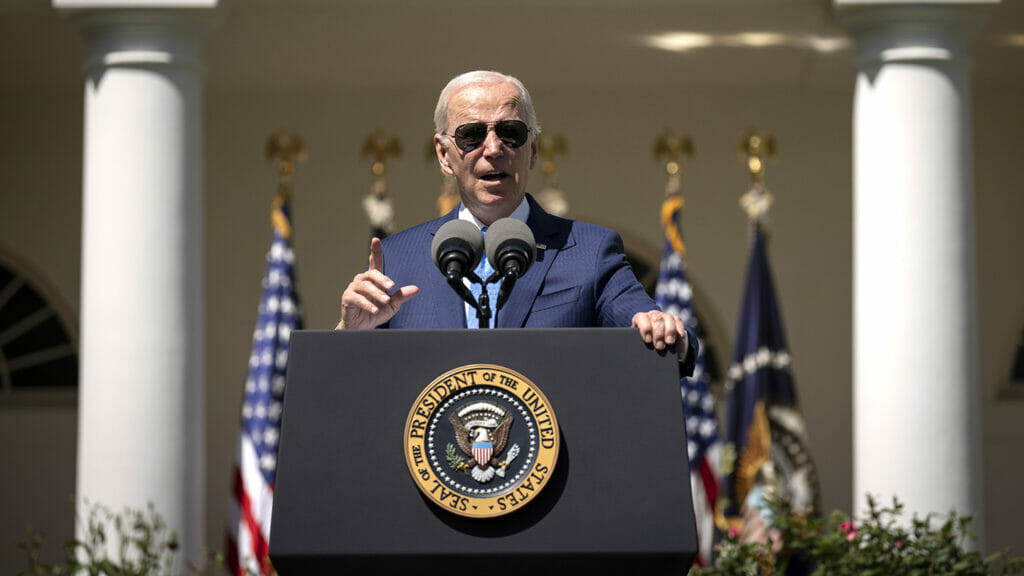
President Biden’s executive order on strengthening the care economy, although well-intentioned, does not offer adequate solutions for long-term care in part because it does not support assisted living settings, industry advocates said Tuesday.
Biden signed the order Tuesday following a White House Rose Garden ceremony, saying that it directs almost every cabinet-level agency to expand access to affordable, high-quality care and provide support for professional and family caregivers.
But advocates for senior living and other aging services providers say it’s not enough.
“Today’s announcement shows that the Biden White House has been listening — but, sadly, the order does not meet the ever-growing needs of America’s older adults and families,” LeadingAge President and CEO Katie Smith Sloan said.
Sloan, who attended the White House speech, said the plan’s focus on home- and community-based services is too limited and must extend beyond care in the home. “It doesn’t provide support for other care settings like adult day programs, assisted living, hospice and more, on which millions of older adults and families rely,” she said.
Argentum representatives agreed that more can be done to provide citizens with better access and affordability to long-term care, including more equitable reimbursements for Medicaid assisted living services.
“Equitable reimbursements will help assisted living and other community-based providers who participate in Medicaid programs to offer competitive compensation for employees,” Argentum Senior Vice President of Public Affairs Maggie Elehwany told McKnight’s Senior Living. “We also believe that assisted living is a key piece in better serving family caregivers, as assisted living allows more family members to remain in the workforce, saving more than $43 billion in productivity.”
Any policy changes relative to Medicaid need to recognize the actual cost of care and adjust payment rates accordingly if the expectation is for higher quality service and worker support, the American Seniors Housing Association said.
“The industry is still recovering from the padnemic and is also facing the same inflationary pressures on their operating costs as other businesses, and as such will only participate in a Medicaid waiver program for assisted living if it is sustainable,” ASHA Vice President of Government Affairs Jeanne McGlynn Delgado told McKnight’s Senior Living. “This should be the goal, because the more assisted living providers in this space represents a cost savings for the government, who otherwise would pay for nursing home care at twice the cost.”
Workforce remedies needed
Although Biden mentioned supporting the direct care workforce, Argentum called for “substantial investments,” noting that long-term care workforce shortages eclipse all others in healthcare, with an estimated 20.2 million workers needed across the continuum by 2040, 3 million for senior living alone.
“Assisted living and memory care communities face the most acute workforce needs across the entire continuum,” Elehwany said. “Argentum supports investments in the geriatric workforce, such as those proposed in the [Safeguarding Elderly Needs for Infrastructure and Occupational Resources] SENIOR Act introduced in the last Congress, and we call on policymakers to establish new training programs and provide funding to meet these increasing needs.”
A math problem exists, Delgado said, in that there are more unfilled positions than people looking for work. Immigration reform, she added, must come with any policy change to improve the workforce.
“The challenges of the workforce shortage that currently exists in public and private-pay settings alike will impede progress in this area until there is a steady supply of workers in this industry,” she said.
Federal agencies, Biden said, collectively will take more than 50 collective actions to address long-term care workforce-related issues, including by using apprenticeship programs and partnerships to keep professional caregivers on the job while they advance their careers.
Elehwany said that Argentum has long championed expanding apprenticeship pathways for certified nursing assistants, licensed practical nurses, registered nurses and rehabilitation technicians. The association also supports creating new apprenticeship programs for healthcare leadership positions, such as nursing directors and executive directors, she said.
The administration, Delgado added, should inventory and assess its current workforce development grant programs that support the caregiving workforce and amend them to “expressly include senior living operators and caregivers as eligible entities who can apply for these grants.”
“Workforce development is essential to providing efficient, qualified staffing in all senior living settings, as well as create rewarding career paths in this growing industry,” she added.
Coordinated leadership sought
Biden’s executive order outlines ambitious goals at a high level, but Sloan said that a more coordinated effort is necessary, reiterating LeadingAge’s call to create a White House Office on Aging Policy.
“It’s time for coordinated federal leadership with focused expertise to address the unique needs of older Americans,” she said.
A spokeswoman for the American Health Care Association / National Center for Assisted Living said that the associations appreciated the Biden administration’s focus on improving quality care for older adults and the direct care workforce, “but we need significant, meaningful aid to help address the root causes of turnover and offer more competitive, good paying jobs.”




